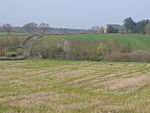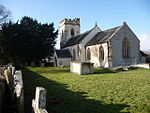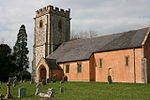Thurlbear Wood and Quarrylands

Thurlbear Wood and Quarrylands (grid reference ST270210) is a 26.7 hectare (65.8 acre) biological Site of Special Scientific Interest south of Stoke St Mary in Somerset, notified in 1963. Thurlbear Wood is a species-rich woodland, formerly managed in a traditional coppice-with-standards system and situated on soils derived from Rhaetic shales and limestones. It is managed by the Somerset Wildlife Trust. The recorded history of the site, its Medieval embankments and the presence of several plants normally confined to primary woods, all suggest that Thurlbear is of considerable antiquity. The woodland has been used for educational and research work for more than 60 years. The 'quarrylands' are an area of calcareous grassland, and scrub occupying 19th-century workings in Lias limestone. Over 80 species of flowering plant occur. There is an outstanding butterfly fauna, with 29 species recorded. Breeding birds associated with the site include buzzard (Buteo buteo), nightingale (Luscinia megarhynchos), and grasshopper warbler (Locustella naevia).
Excerpt from the Wikipedia article Thurlbear Wood and Quarrylands (License: CC BY-SA 3.0, Authors, Images).Thurlbear Wood and Quarrylands
Higher West Hatch Lane,
Geographical coordinates (GPS) Address Nearby Places Show on map
Geographical coordinates (GPS)
| Latitude | Longitude |
|---|---|
| N 50.9837 ° | E -3.0413 ° |
Address
Slough Green Park
Higher West Hatch Lane
TA3 5RW
England, United Kingdom
Open on Google Maps







